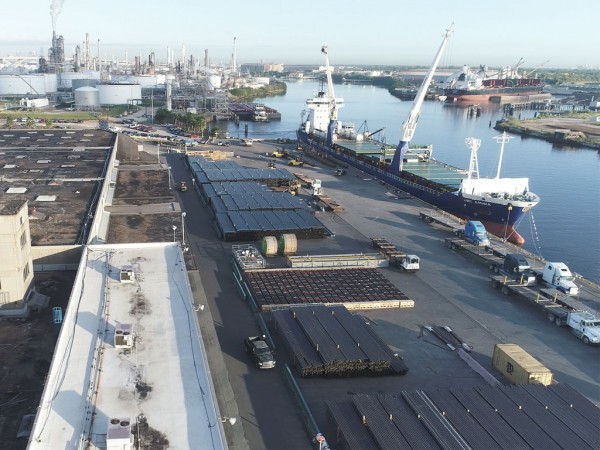For the Logistec Corporation, 2018 has been a very busy year for the Canadian marine and environmental services provider, particularly on the U.S. side of its business. Two strategic acquisitions in the U.S. Gulf region, Gulf Stream Marine based in Houston, and Pate Stevedore out of Pensacola significantly expanded Logistec’s marine operations to 61 terminals in 37 ports across Canada and the U.S.

Logistec is well known for its customer-centric focus and the knack for problem-solving and this distinction has never been more important given the fast-paced uncertainty in today’s markets. “You need to be listening to your customers constantly, you need to think quick, make decisions even more quickly and take action,” explained Madeleine Paquin, president and CEO.
Logistec’s financial numbers have been impressive, with 2017 consolidated revenue of the publicly-traded company attaining a record C$475.7 million in 2017. Increased bulk activity sparked a sharp increase in the marine services segment to $205.3 million.
During the first six months of 2018, consolidated revenue surged to C$231.6 million from the year-earlier $161.9 million. Cargo-handling activities were very strong in the second quarter, thanks in part to the integration of Gulf Stream Marine as of March 2018.
In marine services, Logistec offers bulk, breakbulk and container handling throughout its extensive network. In addition, it provides transportation and cargo services geared principally to the Arctic coastal trade, shortline rail transportation services as well as marine agency services to foreign shipowners active on the Canadian market. While the financial numbers suggest that environmental services have become the biggest revenue generator, this is not yet the case because joint ventures like the Termont container terminal in Montreal and Nunavut Eastern Arctic Shipping are not reflected in the revenue column under accounting standards.
The opportunity landscape in the port and terminal sector remains excellent and Logistec is eager to continue to extend its footprint in 2018-2019, always with an eye on positioning in key strategic hubs and to find solutions through the ups and downs for customers across North America and beyond, the company says.
Latest related development was the Oct. 19 agreement for Logistec to market the Port of Sydney and provide all stevedoring services at the Nova Scotia port’s cruise terminal. At present, the terminal is composed of a multi-purpose berth, which serves for both cargo and cruise vessels. A second berth is to be constructed in time for the 2019 cruise season. Rodney Corrigan, executive vp, operations of Logistec Stevedoring indicated that the extended partnership with the Port of Sydney offers “the chance to find new supply chain opportunities for cargo.”





